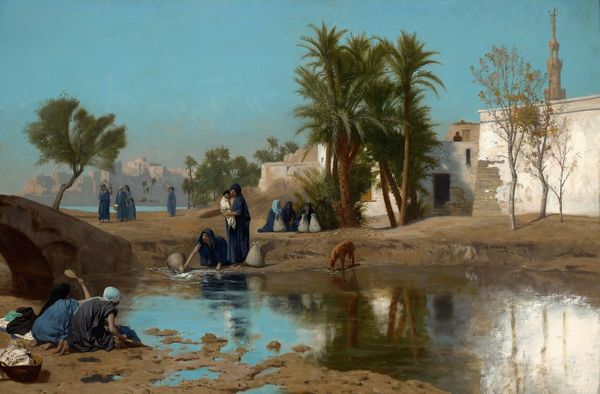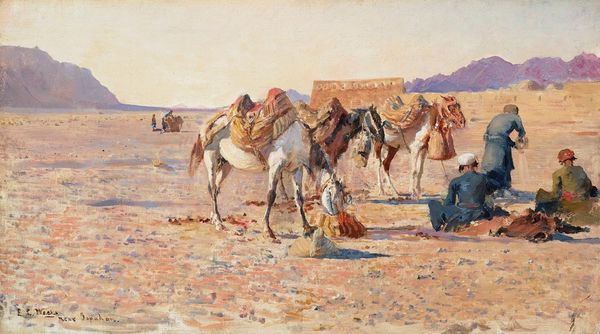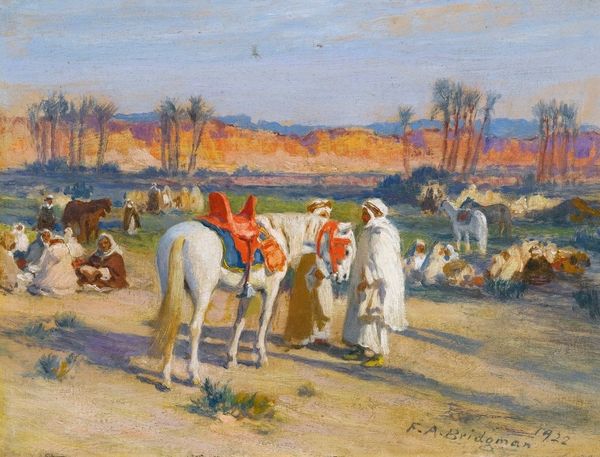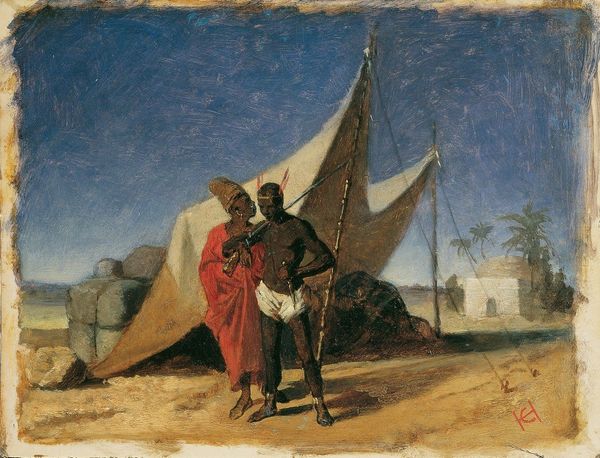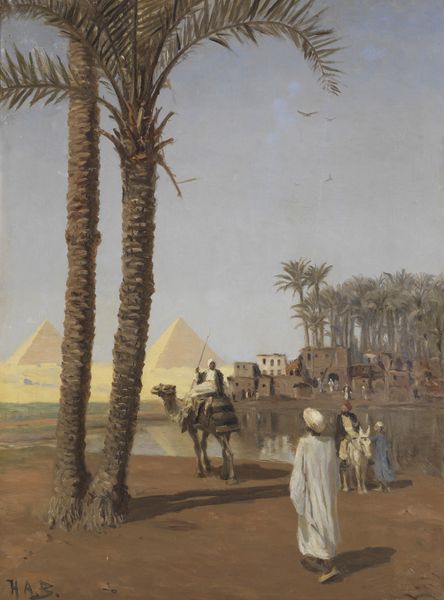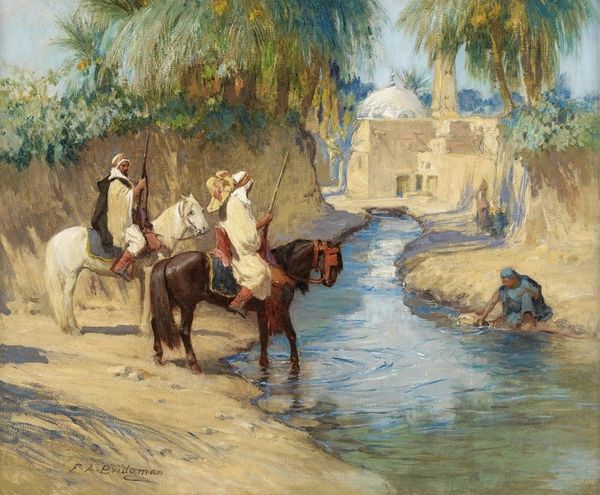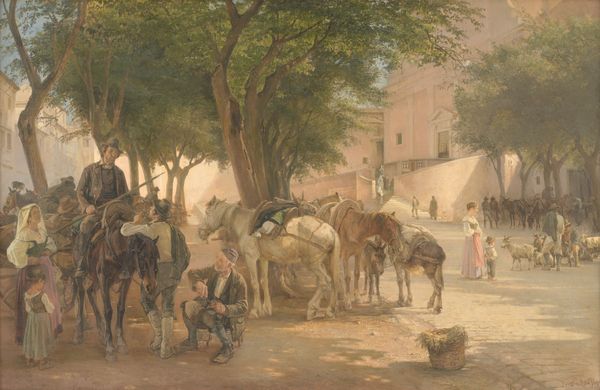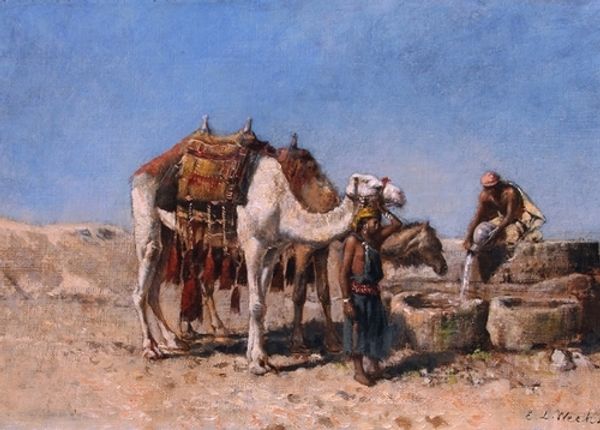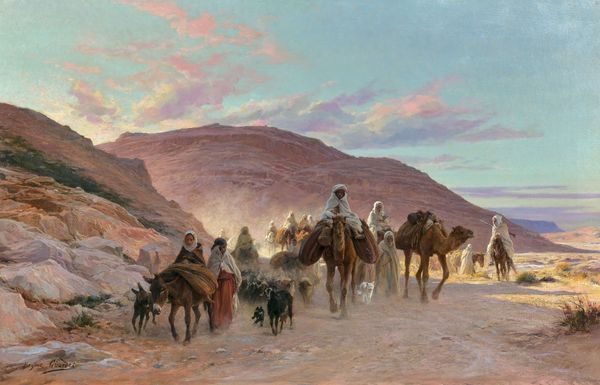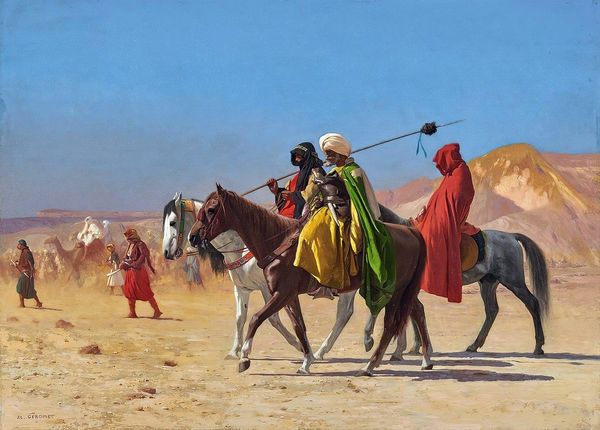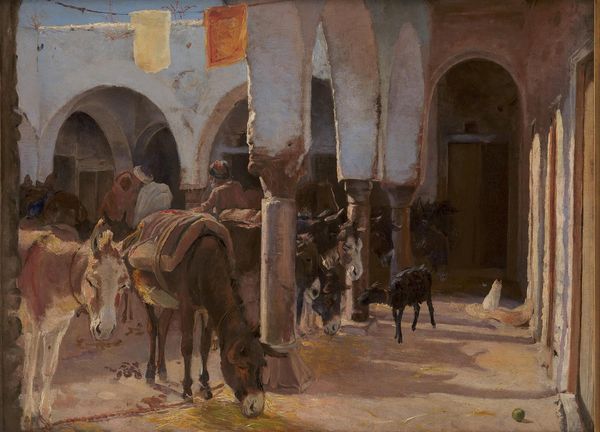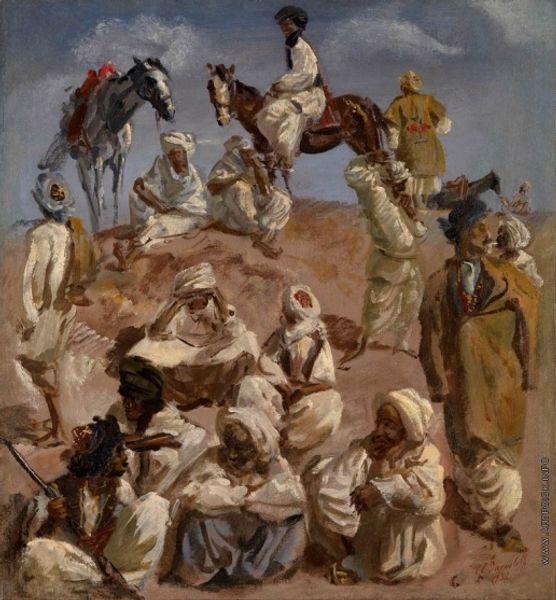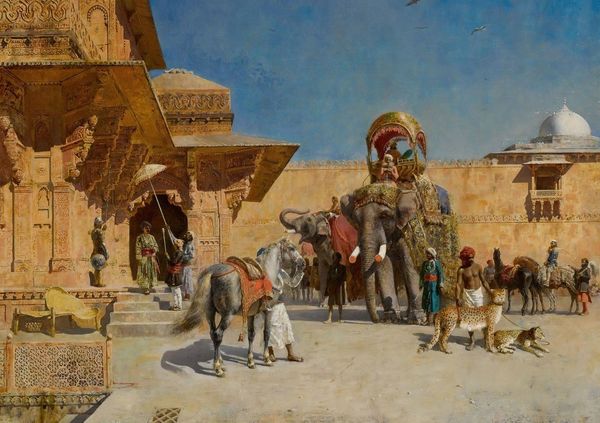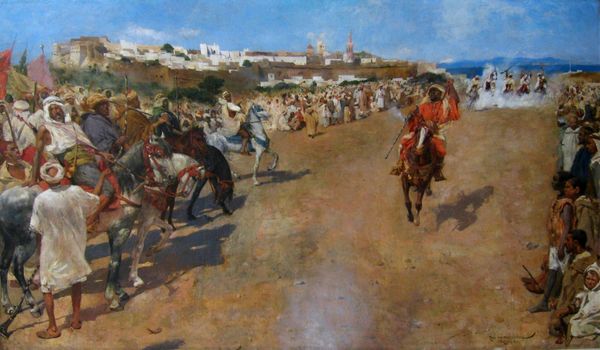
oil-paint
#
gouache
#
oil-paint
#
landscape
#
oil painting
#
orientalism
#
realism
Copyright: Public Domain: Artvee
Editor: This is Jean-Léon Gérôme’s "Leaving the Oasis," an oil painting dating to the 1880s. It has a somewhat serene, processional feel to it, and is executed with sharp realism. What's your read on this, and perhaps on why this painting holds importance in the grand scheme of art history? Curator: It's a fascinating example of Orientalism, a movement deeply entangled with colonialism. Gerome's work, like many others from this period, reflects a Western fascination with and often romanticized view of the Middle East and North Africa. Consider the figures; what impression do they convey about the local population, and who would have comprised the artist's viewers? Editor: I suppose they project an image of exoticism, reinforcing Western stereotypes. Were paintings like this purely artistic, or did they serve other purposes? Curator: They certainly weren't made in a vacuum. Such depictions played a role in shaping public perception, legitimizing colonial ambitions by portraying the colonized as picturesque and even subservient. Think about the institutions exhibiting these works. How did their patronage and display reinforce societal power structures? Editor: So, it’s more than just a pretty picture; it’s tied to political and social forces. Even something seemingly simple, like a landscape with camels. Curator: Exactly. And Gerome, despite his artistic skill, perpetuated a specific narrative. We have to consider the political economy of representation. The choice of subject, the style, the intended audience - all these factors reflect power dynamics. It's crucial to analyze who is telling the story and whose perspective is missing. Editor: I never thought of it that way; I was initially taken in by the detail, but this offers a new depth to how I should think about approaching artwork, understanding all the background contexts to better interpret its importance and legacy. Curator: Precisely. By interrogating art’s connection to the culture and institutions that surround it, we can unearth deeper, richer understandings.
Comments
No comments
Be the first to comment and join the conversation on the ultimate creative platform.

